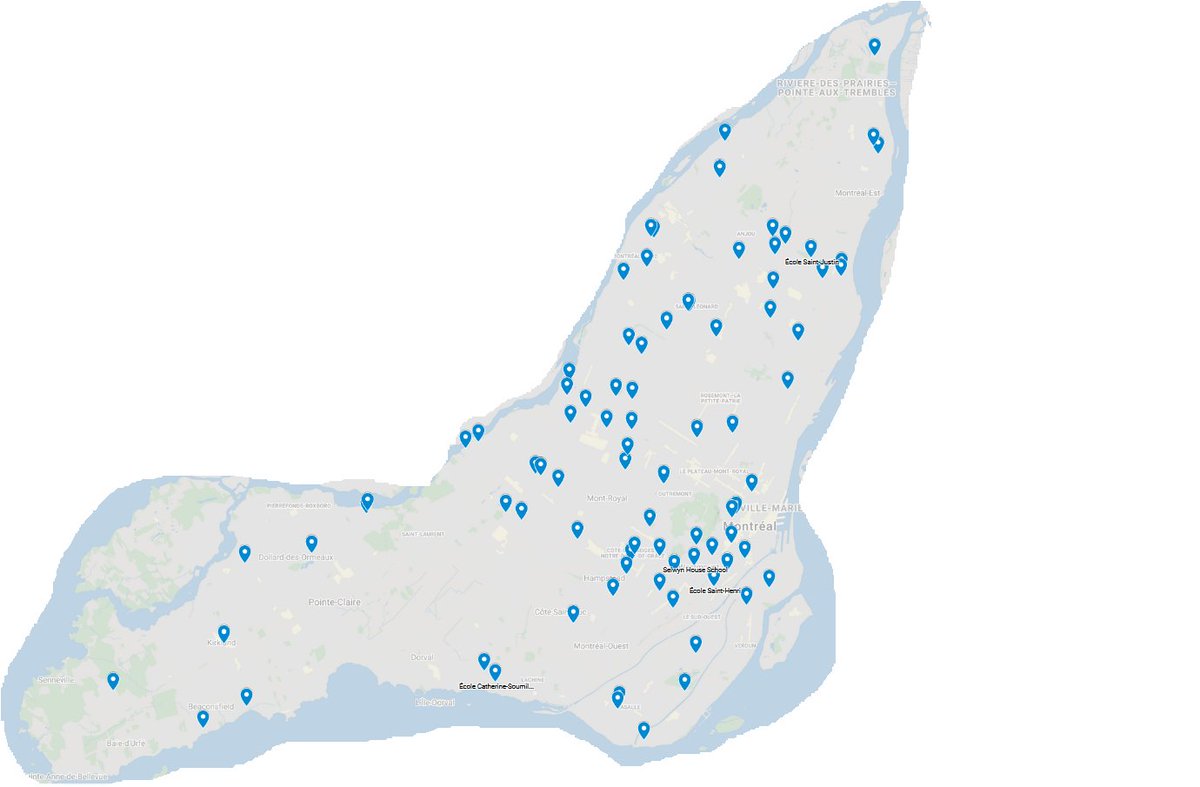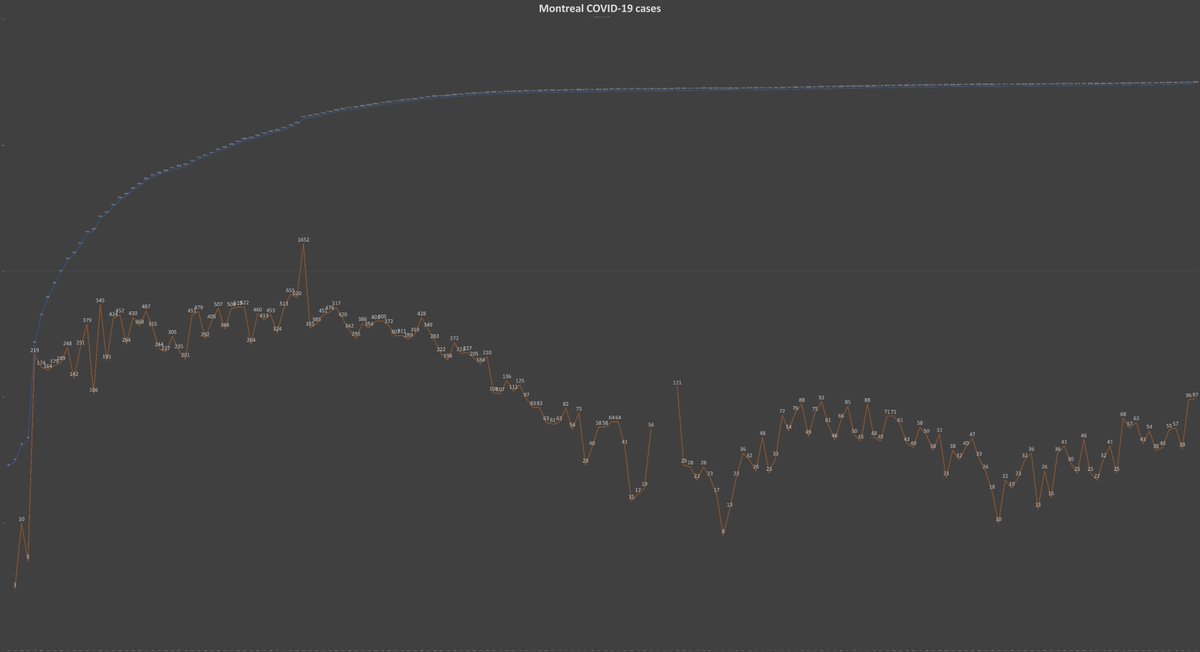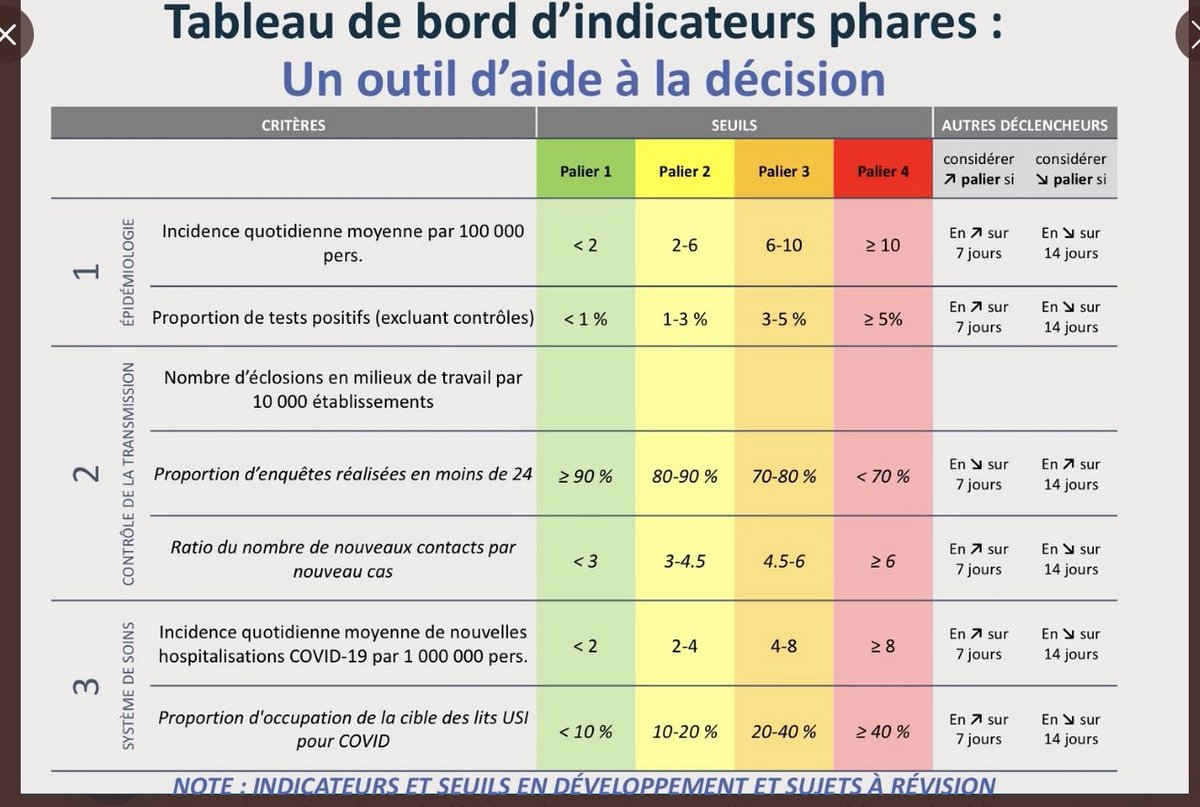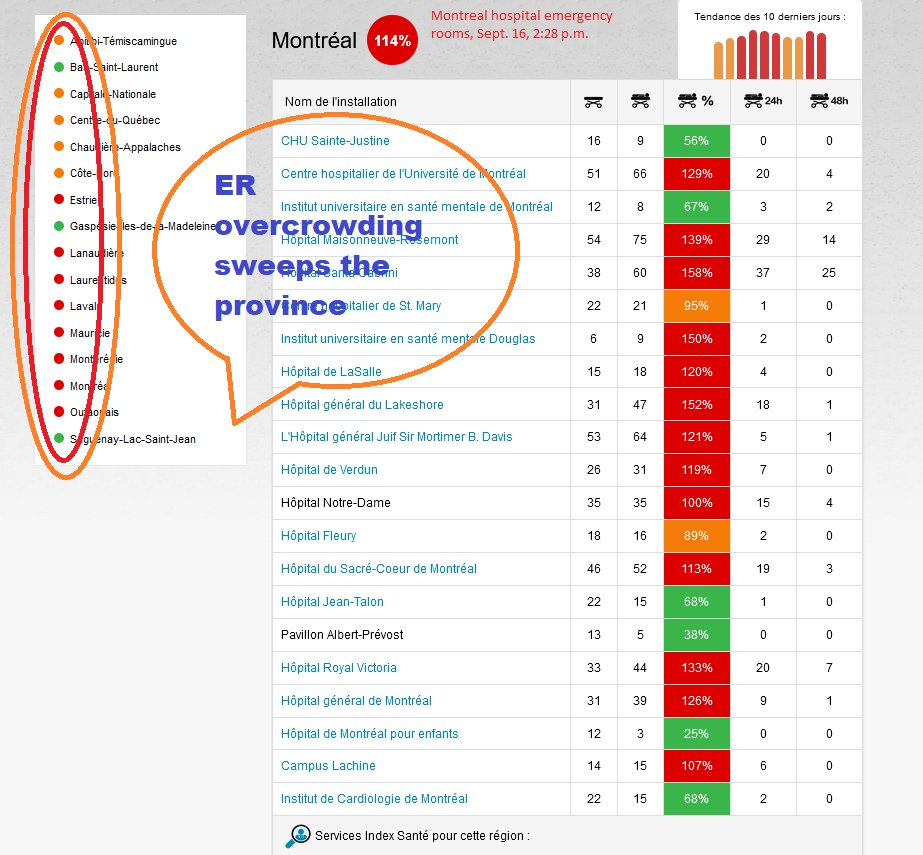1) COVID-19 appeared to be surging in the east end of Montreal on Wednesday in a manner not even observed during the first wave of the #pandemic. In this thread, I will try to shed light on what may be going on in the metropolis amid the resurgence.
2) In the chart below, you will note a significant increase in the number of cases among three health districts in the East End of Montreal Island, with a combined total of 39 new #COVID19 positive test results. That compares with only three cases on the West Island. 

3) This is an inversion from what occurred during the beginning of the first wave of the #pandemic when #COVID19 erupted in the Centre-West of Montreal in the municipality of Côte Saint-Luc and the borough of Côte-des-Neiges—Notre-Dame-de-Grâce.
4) If you look at the map below — courtesy of covidecolesquebec.org — you will observe far more schools in the Centre and East End of the metropolis that are declaring confirmed cases of #COVID19 among students and staff than on the West Island. 

5) What’s driving the increase in the East End? Are more East End residents getting tested for #COVID19? Is it because the East End is more densely populated than the West Island? It’s hard to answer these questions, especially given this is a new trend, but it's worth noting.
6) The picture is less clear among long-term care centres (CHSLDs) and seniors’ residences (RPAs). A total of nine elderly residents are infected with #COVID19 in the East End compared with seven on the West Island. Another 13 cases are concentrated in the centre of the city.
6) Meanwhile, Montreal posted 97 #COVID19 cases on Wednesday. The last time the city recorded the same number was all the way back on June 6, at the very end of the first wave of the #pandemic. Please see the rising orange line in the chart below. 

7) Let's turn away now from Montreal to regions where the #coronavirus is also proliferating, possibly more so than in the metropolis. Much has been reported about Quebec City’s outbreaks, but two other regions are of great concern: Bas-Saint-Laurent and Chaudière-Appalaches.
8) Bas-Saint-Laurent’s rolling seven-day average on Wednesday was 11 cases per 100,000 population, a threshold that’s high enough to trigger being declared a red zone, according to one of the criteria that analyst @Patrickdery revealed the government has been considering. 

9) The situation is even worse in Chaudière-Appalaches, with a rate of 37.19 cases per 100,000 population. Of course, case incidence is not the sole criterion to declare a region a red zone, but this demonstrates how the #coronavirus is truly spreading all over the province.
10) What’s also spreading all over the province is ER overcrowding. (See the chart below.) The #COVID19 resurgence is now occurring across Canada, with Ontario poised to announce a reduction in the size of public gatherings. Perhaps Quebec should do the same. End of thread. 

Addendum: Thanks to @Patrickdery for pointing this out. I must correct an error for Bas-Saint-Laurent. Its rate should be 9.64 cases per 100,000 residents, just below the red-zone criterion. I incorrectly reported 11 cases per 100,000, another stat from my notes. My apologies.
Another correction: Chaudière-Appalaches's rate is actually 4.59 cases per 100,000 residents, compared with 2.94 in Montreal. I based my population figure on a district of that region, not the whole region. Will have to triple check these figures in the future. My apologies.
• • •
Missing some Tweet in this thread? You can try to
force a refresh














